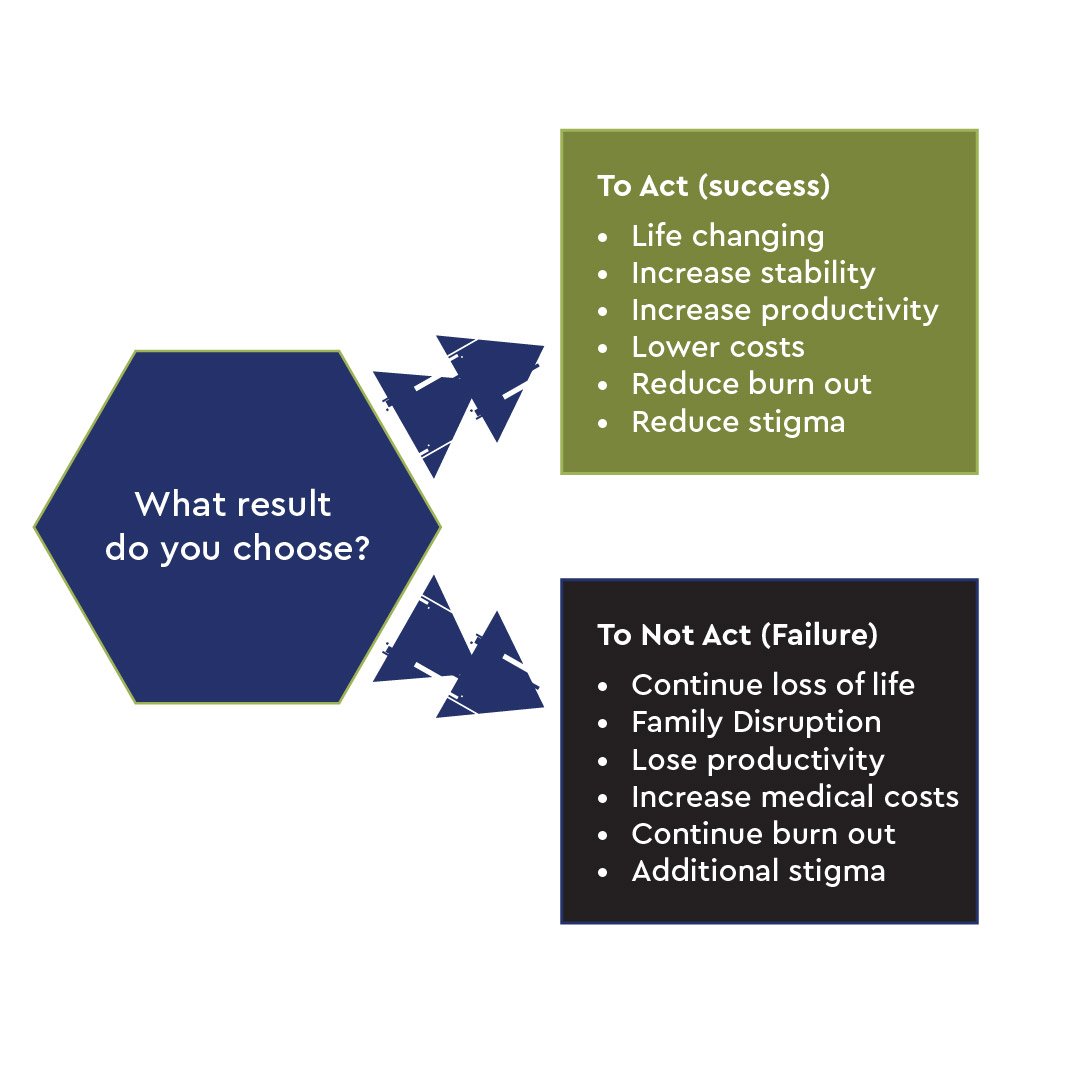Mental health in the workplace
I’ve experienced bipolar disorder for over 30 years, almost the same amount of time I’ve worked in the IT industry. As the name implies, I’ve faced ups, downs, and challenges managing the illness and associated stigma. My situation is stable. But things have changed in recent years about how mental health is—or isn’t—addressed with individuals and in the workplace.
The goal of this blog is to highlight what has changed, the importance of mental health, and how you can help improve mental wellness in your organization. When I speak to managed service providers (MSPs), vendors, and other organizations around the country about mental health, I share four challenges and changes we are experiencing in the workplace:
- Stigma—historically, mental health is not openly discussed or widely supported in organizational cultures.
- Leading and managing teams—the pandemic created new situations and expectations for working and connecting with colleagues.
- Financial stress—economic conditions, inflation, and job uncertainty create stressors for owners and employees.
- Trends and behaviors—data and trends report increased concerns with isolation (so-called Artificial Intimacy), loneliness, social media pressure, and more.
Introduction to mental health and the tech industry
The World Health Organization defines mental health as “a state of mental well-being that enables people to cope with the stresses of life, realize their abilities, learn well and work well, and contribute to their community.” (2022)
Mental health is a human right that is experienced differently by each of us. Having challenges with mental health does not mean someone has a mental illness. Conversely, mental illnesses do not exclude someone from achieving better mental health. Again, experiences are case-by-case.
Dr. Sagar Samtani and Edlin Garcia from the University of Indiana recently shared valuable insights on mental health management within the IT and cybersecurity fields. They presented their findings during a breakout session at IT Nation Secure 2022—later publishing it as a blog on CompTIA. According to their study, some key reasons organizations invest in their employee's mental health include:
- Retention
- Employee satisfaction
- Partner satisfaction
- Product quality
- Avoid burnout
- Excess turnover
- Help preserve a strong mental health posture for employees.”
Through their research, they came to the conclusion that "the first step is talking about it and reducing the stigma." If we can’t move past the stigma associated with mental health, the opportunities to increase awareness and take action don’t matter.
For further insights, I suggest reading Ms. Garcia’s July 11, 2023 CompTIA blog post titled, “Why We Need to Acknowledge Mental Health in the Tech World.” Here she provides data and guidance on where to look for resources, how to identify your own stressors, and actions for individuals and organizations.
Two recent pieces of feedback I received from MSPs reinforce this thinking:
- “By sharing experiences openly, it was easier for others to let down their walls and engage in a meaningful dialogue about their own struggles with mental health. This kind of vulnerability can be potent.”
- “I began our leadership team planning session with 30 minutes focused on wellness and mental health. We progressed to purpose in the organization with a balance to how staff wellness will drive revenue, balance in our team, and ultimately how we deliver service.”
How Large is the Problem? What does the data say?
Not only does this feedback reiterate the conclusions from the study, but there are several data points that support their findings as well:
- 1 in 5 U.S. adults experience mental illness each year.
- 1 in 20 U.S. adults experience serious mental illness each year.
- In a study of 2,700 global employees, more than 40% said their mental health has declined since the pandemic.
- 50% of millennials and 75% of Gen Z employees have left a prior role for mental health reasons—compared to 34% overall.
- People with depression have a 40% higher risk of developing cardiovascular and metabolic diseases than the general population.
- U.S. Surgeon General Advisory Report: “The physical health consequences of poor or insufficient connection (i.e., isolation/loneliness) include a 29% increased risk of heart disease, a 32% increased risk of stroke, and a 50% increased risk of developing dementia for older adults. Additionally, lacking social connection increases the risk of premature death by more than 60%.”
ConnectWise IT Nation Evolve peer groups participated in a voluntary survey about mental health in May 2023. Regarding their employees’ awareness of mental health resources, just over one-third of respondents said they were not “very aware" or "somewhat aware.” For cultural acceptance of mental health carrying no stigma, just under one-third of respondents indicated they did not "agree" or “strongly disagree." My small group presentations and workshops indicate these numbers are even lower. All of this goes to say one thing—we have work to do.
“So, now what?” how we can change the trajectory
“Stop, Drop, and Roll” is the three-step approach to take when a person’s clothes catches on fire. For mental health, I offer these three steps for use in your organization:
- Build a culture that de-stigmatizes mental health
- Acknowledge that everyone experiences stress and that mental health is not a weakness.
- Communicate clearly and regularly with leaders and teams.
- Distribute content to all employees about the signs and symptoms of poor mental health and opportunities for treatment.
- Provide managers with training to help them recognize the signs and symptoms of stress and depression in team members and encourage them to seek help from qualified mental health professionals.
- Create wellness programs/training for financial planning, workplace stress, etc.
- Offer flexible work options.
- Utilize assessments such as the Well Gauge Tool to evaluate mental health in your organization and encourage open sharing between leaders.
- Level-up wellness programs
- Help employees understand your Employee Assistance Program (EAP); educate them about accessing benefits and programs.
- Supplement your EAP with simple additions such as lunch-and-learn presenters on the importance of sleep, diet, and exercise.
- Host training sessions/workshops that address depression and stress management techniques, such as mindfulness, breathing exercises and meditation to help employees reduce anxiety and stress and improve their focus and motivation.
- Create opportunities for employees to learn and share from SMEs and each other. Recently my employer started a Colleague Resource Group (CRG) to “ensure colleagues are aware of the mental health resources we offer. It starts with having a clear understanding of what mental health is, acknowledging its impact on daily life, having conversations that help destigmatize mental health—and ultimately taking steps to improve your mental health, including seeking help.”
- Be proactive
- Build and communicate your plan before you need your plan.
- The best model for mental health in the workplace parallels MSPs’ shift from reactive break/fix to proactive managed care.
- Create FAQs to confirm preparation and consistent response among your leadership team.
In addition to these three steps for addressing mental health in your organization, I have two related points. First, I suggest you avoid changing too much too quickly. Prioritize action and start small. Leaders can increase awareness and change cultures by repeatedly communicating that:
- Everyone experiences stress (as a proxy for mental health challenges) in their job
- We have helpful resources to deal with stress, and
- Your leaders care about you, so if stress becomes too much connect with them to get help.
In short, “Acknowledge, educate, and care.”
Second, most leaders are concerned about what can and can’t be discussed with managers, direct reports, and colleagues. You should talk to your HR or PEO leader, or your HR attorney, for details as this can vary by state. For 20 years, I’ve decided to let my manager and close colleagues know I’m managing my medical condition. This helps me be proactive without oversharing and also helps educate my co-workers. From my experience, people are highly likely to be empathetic and caring, especially when we work as a team toward a common goal.
To act, or not to act?
As shown below, we each face questions about actions that improve mental health. Reducing stigma and increasing awareness are important first steps.

Taking action initiates change and makes a difference in the lives of others. You have the understanding to create change. As Stephen Covey, author of The 7 Habits of Highly Effective People states, “To know and not to do, is really not to know.” I encourage you to do—and make a difference.
Supporting resources
- Ginger – “Mental health support made just for you. Behavioral health coaching, therapy, psychiatry, and self-care resources, all from the privacy of a smartphone”
- Headspace – Manage meditation, sleep, stress, and mindfulness.
Scott Scrogin is the Strategic Initiatives Director at ConnectWise, where he develops partner-facing initiatives which drive partner success. Additionally, he speaks and conducts workshops nationally as an advocate for mental health. Scott is a Certified Peer Support Specialist, has completed Mental Health First Aid training, and managed bipolar disorder for over 30 years. He was VP of Professional Services at an MSP and served as president at HTG Peer Groups. Scott holds a degree in mechanical engineering and an MBA. He and his wife live in Omaha, Nebraska.
Disclaimer: If you or someone you know is in crisis, call, or text the 988 Suicide & Crisis life line for 24-hour, confidential support to anyone in suicidal crisis or emotional distress.
This blog does not provide medical advice and is intended for informational purposes only. This is not a substitute for professional medical advice, diagnosis, or treatment. Do not disregard professional medical advice or delay seeking professional advice because of information you read here.






